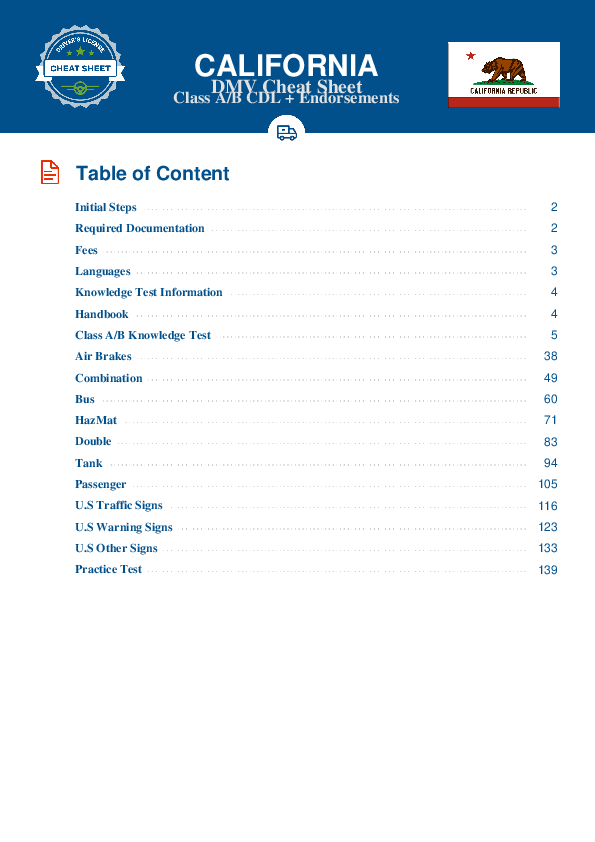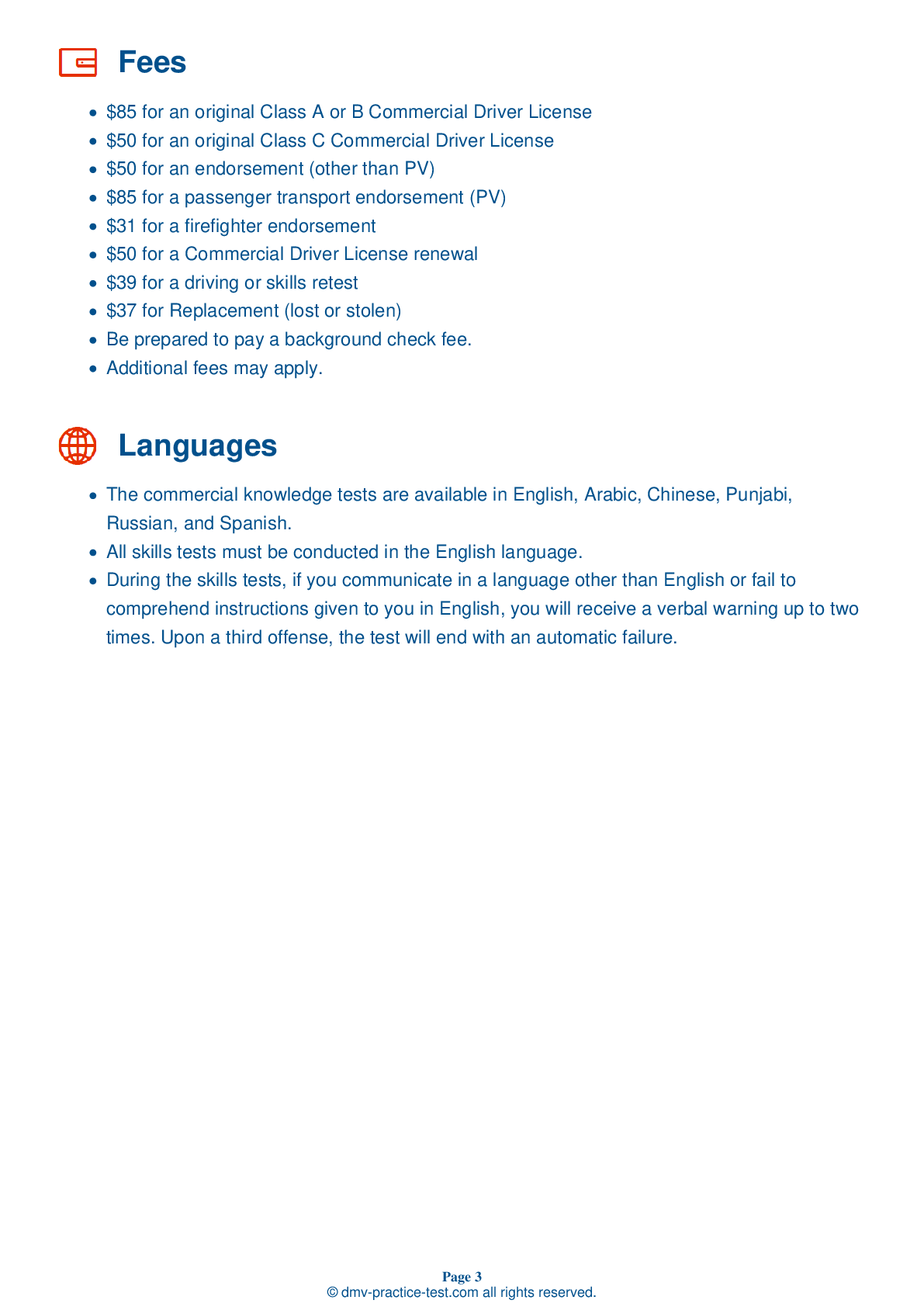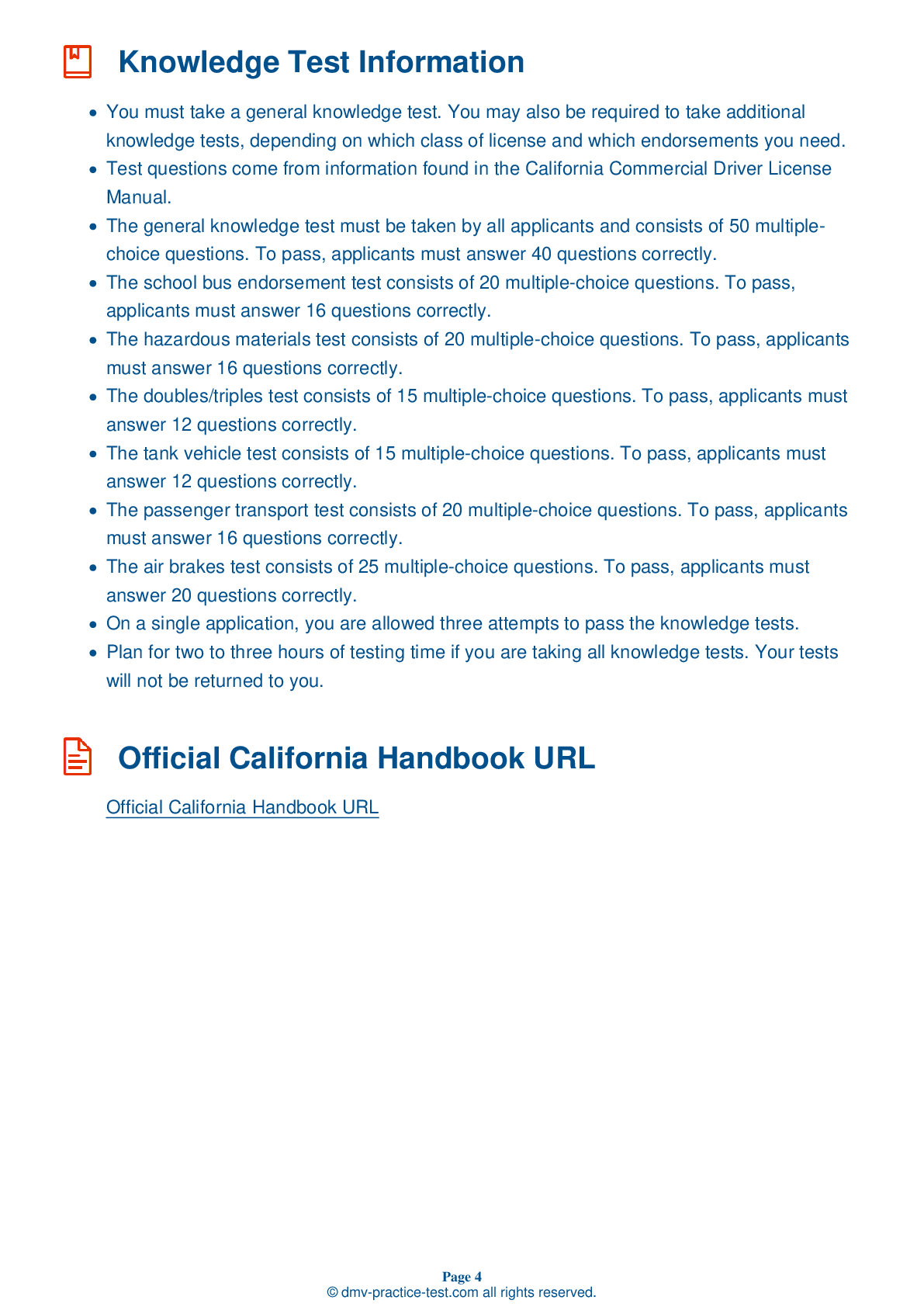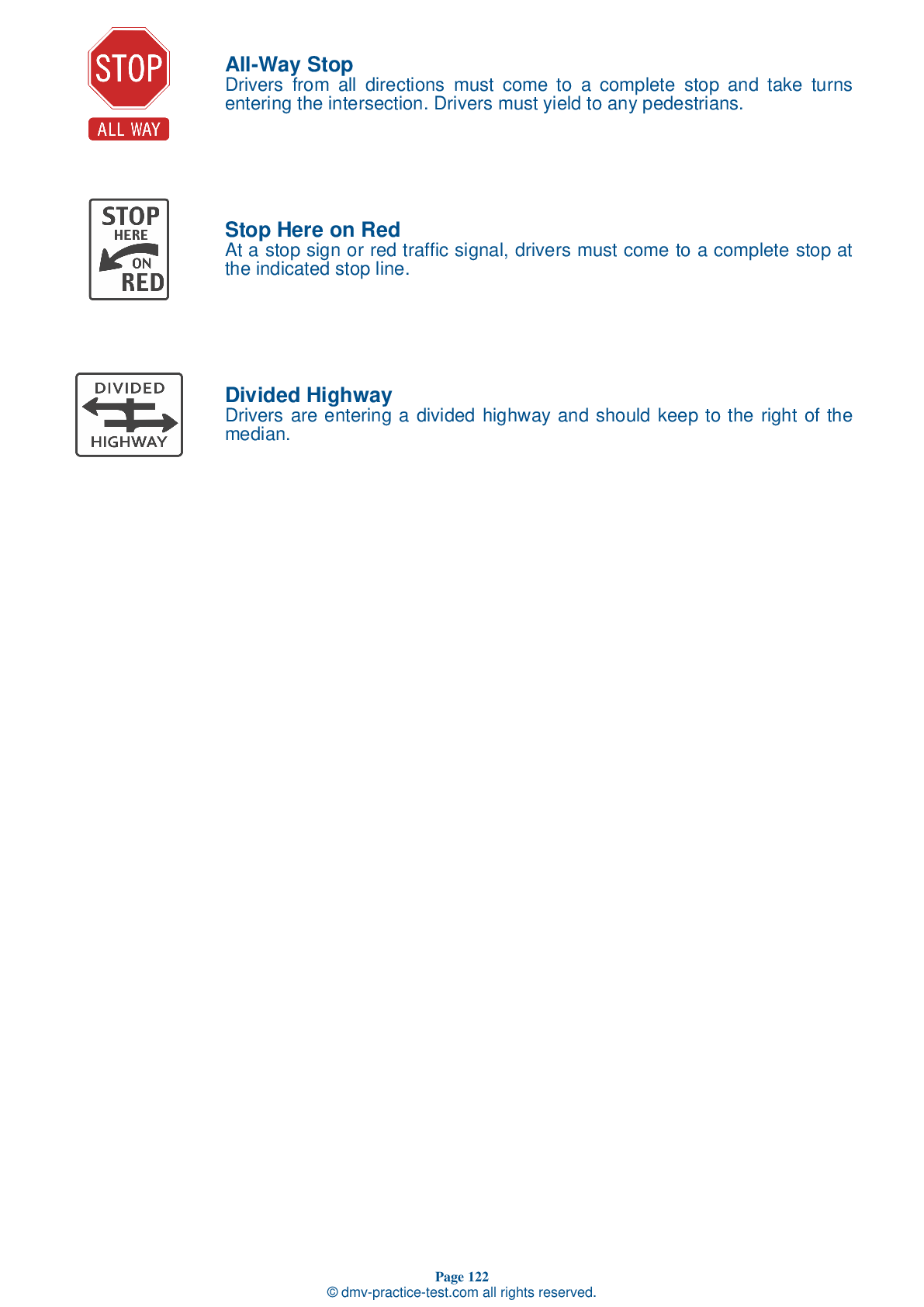Passenger Endorsement | California 2025 #2 Page 2 of 3
Train for FREE with our California CDL passenger endorsement practice test online. The official exam test consists of several obligatory parts, with all of them checking your knowledge of different blocks of road rules. If you need to obtain a CA DMV passenger endorsement in 2025, practice as much as possible. Free sample tests published on our website will help you check and improve your knowledge and boost your grades. Please bear in mind that DMV requirements for issuing a CDL permit with passenger endorsement may vary from state to state.
8 . When starting an engine, oil pressure should come up to a normal level:
Look at your truck's gauges when starting the engine. The oil pressure in an engine should come up to a normal level within seconds of the vehicle's engine being started.
9 . Once passengers have boarded your bus, you should:
You should start and stop as smoothly as possible to help prevent passenger injury. After passengers have boarded your bus at a stop, you should allow them time to be seated or to brace themselves before you begin driving.
10 . Which of the following is not a type of distraction?
Distractions that can affect safe driving can be classified as physical (such as reaching for an object), mental (such as talking with passenger), or both (such as talking on a hand-held phone).
11 . When driving on packed snow, you should reduce your speed by:
Reduce your speed when traveling on surfaces that provide reduced traction. Reduce your speed by one-half or more when traveling on packed snow.
12 . Rough acceleration:
Rough acceleration can cause mechanical damage, so be sure to accelerate smoothly and gradually.
13 . Which of the following is not a sign of tire failure?
If you experience tire failure, you may hear the loud "bang" sound of a blowout or feel a heavy thumping or vibration in your vehicle. If steering begins to feel heavy, or if the rear of your vehicle begins to fishtail, you should stop to check your tires.
14 . While passengers are on board a bus, refueling the bus in an enclosed space, allowing the bus to be towed, and conversing with the passengers are considered to be:
Bus drivers should not engage in conversation with passengers, fuel a bus inside an enclosed building, or tow or push a disabled bus with riders aboard the vehicle. These are all considered to be prohibited practices.
See the exact questions that will be on the 2025 California DMV exam.
99.2% of people who use the cheat sheet pass the FIRST TIME
Lillian MCcranie explains how our CDL study guide was helpful in passing the exam and recommends it to everyone.
Cameron tells us how he purchased the CDL exam, and found it to be a useful tool which helped him pass the exam and find a job.



